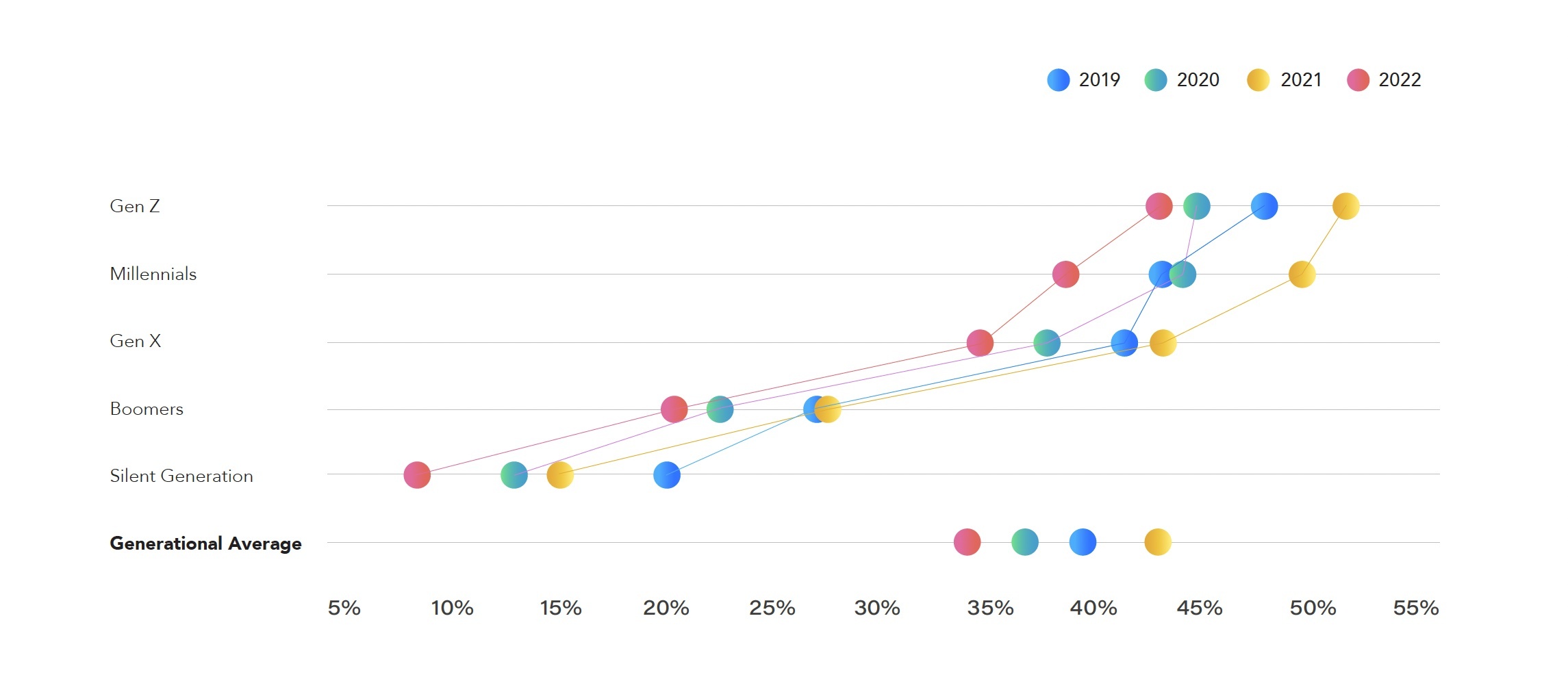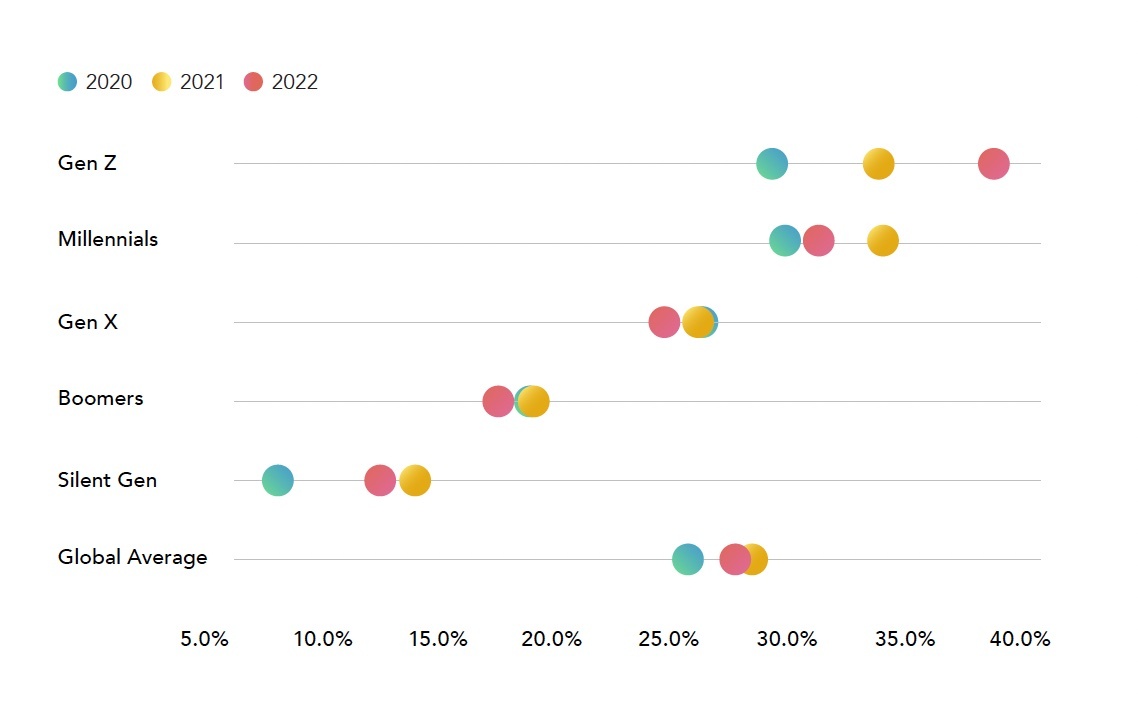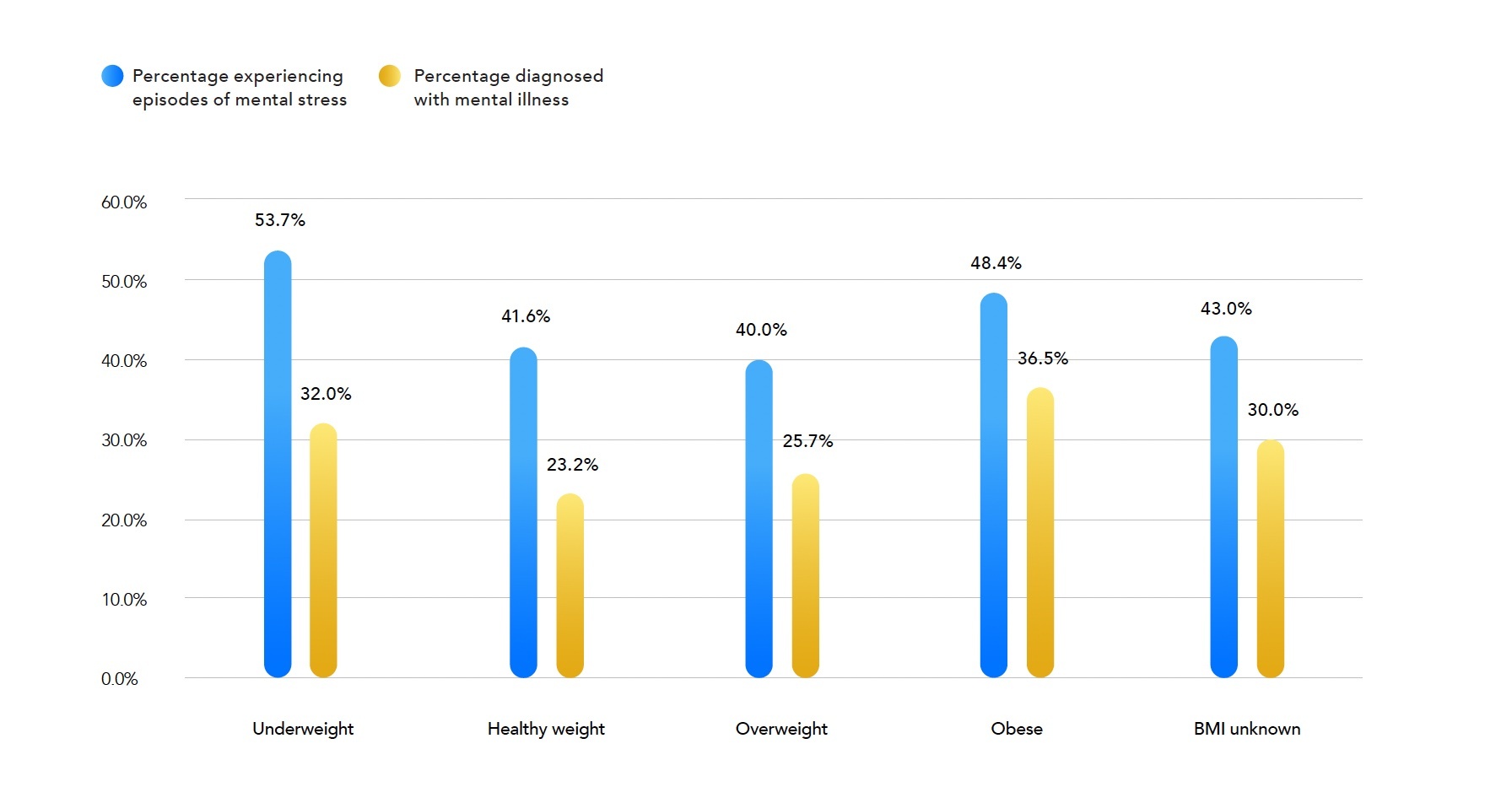Mental health: be mindful of its power

Living through a pandemic has taken its toll on mental health. The World Health Organization’s Global Burden of Disease 2020 study estimates that it has led to a 27.6% increase in cases of major depressive disorder and a 25.6% increase in cases of anxiety disorder. [1]
-
65.8% of all respondents feel mental health is still stigmatised
The full impact of the pandemic on mental health has yet to be fully understood but our research indicates that, after a 43.0% spike in 2021, stress levels are falling to their lowest level since we have been measuring it. This year, 34.0% of respondents say they often or always feel stressed.

Figure 1 – Stress levels per generation - % of often or always stressed / Question: Generally speaking, how do you feel?
As we have seen in previous years, reported levels of stress are inversely correlated with age (Figure 1). Gen Z respondents were five times more likely to report being always or often stressed than those from the Silent Generation.

Figure 2 – Breakdown of stress levels per frequency of exercise / Question: How often do you exercise for more than 20 minutes? Generally speaking, how do you feel?
As shown in Figure 2, exercise has a beneficial effect upon feelings of stress. Those who rarely exercise are more likely to complain that they are often or always stressed.
Cause and effect
Survey participants were asked about the potential issues that might lead to stress. For those who are not normally stressed this is, to some extent, a hypothetical exercise. Nevertheless, it shows up some interesting generational differences. Overall, the two most likely causes were financial issues and health. However, it is not surprising that at the generational extremes we see totally different answers. For Gen Z, finances are a likely cause of stress, whilst health is the least of their concerns. The opposite is true for those of the Silent Generation who are more acutely aware of their mortality and, in most cases, removed from exposure to pressures of work (Figure 3).

Figure 3 – Top causes of stress by generation / Question: Rank the following causes of stress for you
The impact of mental health
This year’s survey saw a very modest decrease in the percentage of respondents that have suffered a period of mental distress that prevented them from doing their usual activities. This dropped from 45.6% in 2021 to 43.2% this year. This is not an accurate indication of the incidence of mental distress during the year because respondents are asked if they had ever experienced such an episode. Nevertheless, it is a positive sign that the numbers are relatively stable.
A similarly modest decrease is evident among those who have ever been diagnosed by a medical professional as having a mental health condition such as depression, panic attacks or anxiety. This year, 27.6% of respondents say they have had a diagnosis, down from 28.3% last year.

Figure 4 – Diagnosed mental health conditions per generation / Question: Has a medical professional ever diagnosed you as having a mental health condition such as depression, panic attacks or anxiety?
Looking at the findings by generation shows that the percentage of respondents who have had a professional diagnosis of mental illness decreases with age (Figure 4). These differences are more significant than they may first appear at first sight. The question asked whether respondents had ever had a diagnosis of mental illness, so it is concerning that, in their relatively short lifetime, 38.5% of Gen Z reported having such a diagnosis compared with just 12.5% of the Silent Generation.
Link between physical and mental health
It has long been suspected that there is a link between physical and mental health. The survey does not seek information about respondents’ medical history but using body mass index as a surrogate measure of health does reveal some interesting results (Figure 5).

Figure 5 – Breakdown of self-perception & diagnosed mental health episodes according to BMI
This suggests that the underweight and the obese are significantly more likely to have experienced episodes of mental distress or to have had a diagnosis of mental illness. We cannot distinguish between cause and effect but there is clear evidence of a link.
Support services
The respondents who had experienced a period of mental distress were asked about the support or intervention they found helpful. Talking to friends and family is likely to be the first source of help and is seen by 43.1% as being helpful. We also see more evidence of the beneficial effects of physical exercise. (See Fig 6)

Figure 6 – Mental health support channels by generation / Question: When going through this period, which of the following, if any, did you find helpful?
Professional support, such as cognitive behavioural therapy and counselling, enjoyed less recognition. This is not necessarily a reflection of the effectiveness of these services. It is probably due to the fact that many of these episodes had not been professionally diagnosed.
Age makes a difference to the type of support to which consumers turn. Gen Z and Millennials are more likely than older generations to turn to technology-based support, such as mental health apps, or to meditation (Figure 6).
References
- World Health Organisation. 2022. Mental Health and COVID-19: Early evidence of the pandemic’s impact: Scientific brief, 2 March 2022. [online] Available at: <; [Accessed 3 August 2022].